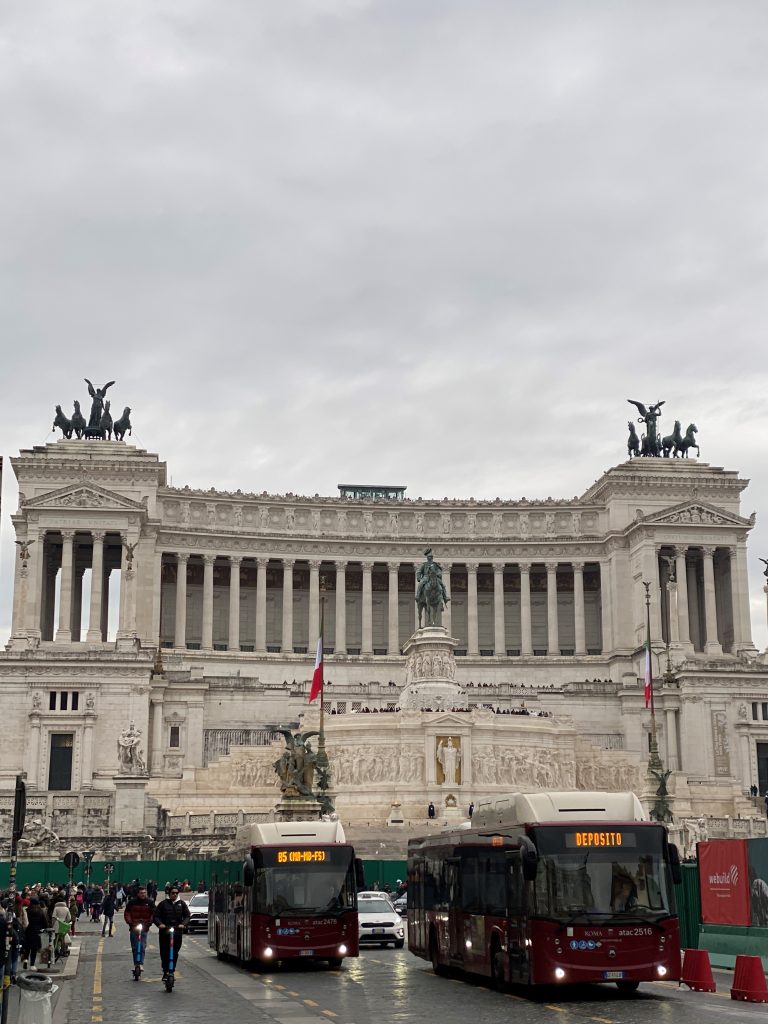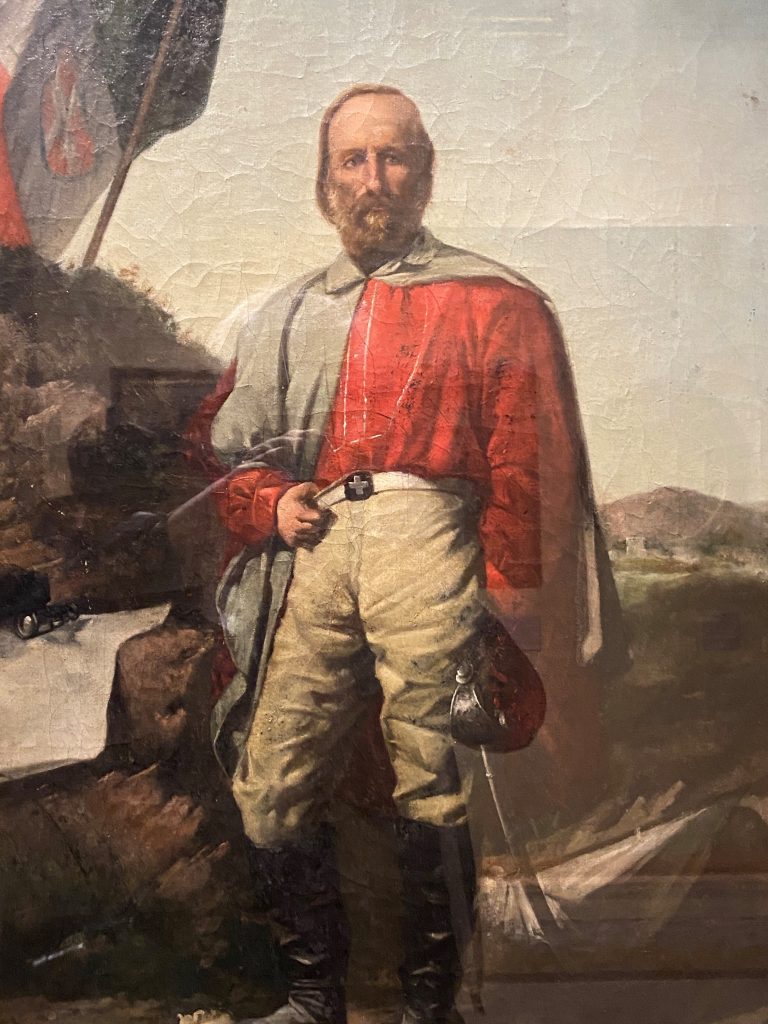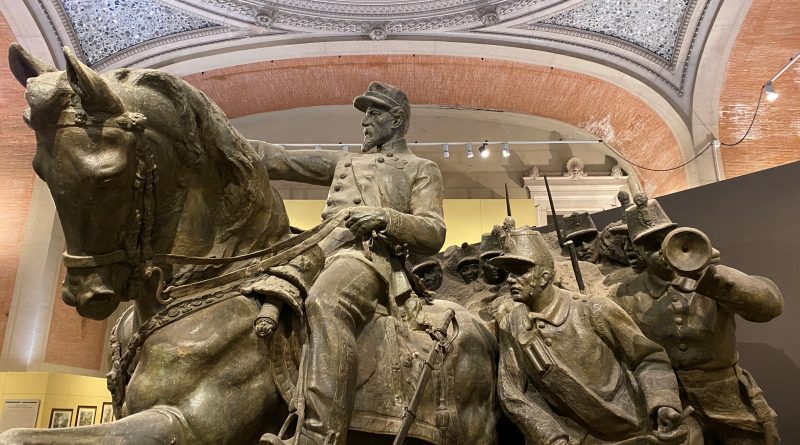Altar of the Fatherland – The Vittoriano National Monument
This large eclectic, disjointed and slightly cumbersome national monument, known as the Vittoriano, was built in Rome between 1885 and 1935 to honour Victor Emmanuel II, the first king of a unified Italy.
It occupies a site between the Piazza Venezia and the Capitoline Hill in the centre of the city.
The idea was it would become one of the symbols of the new Italy, joining the monuments of ancient Rome and those of the popes Rome — a modern forum dedicated to the new free and united Italy.
From an architectural perspective, it was conceived as a modern forum, an agora on three levels connected by stairways and dominated by a portico characterized by a colonnade.

Thus complex building reflected an equally complex process of national unity and liberation from foreign domination carried out by King Victor Emmanuel II of Savoy, to whom the monument is dedicated.
It also preserves the Altar of the Fatherland, first an altar of the goddess Rome, then also a shrine of the Italian Unknown Soldier, thus adopting the function of a secular temple consecrated to Italy.
As a national symbol, every year it hosts important national celebrations. The largest annual celebrations are Liberation Day (25 April), Republic Day (2 June), and Armed Forces Day (4 November). During these celebrations, the President of the Italian Republic and the highest government officials pay tribute to the Italian Unknown Soldier and those who died in the line of duty by laying a laurel wreath.
Another general objective of this unique and ,critics say ,confused building was also to make Rome a modern European capital that rivaled Berlin, Vienna, London and Paris overcoming the centuries-old pontifical town plan. In this context, the Vittoriano would have been the equivalent of the Brandenburg Gate of Berlin, the Admiralty Arch of London and the Opéra Garnier of Paris.

The Vittoriano is on the Capitoline Hill, in the symbolic centre of ancient Rome, and is connected to the modern one thanks to roads that radiate from Piazza Venezia.
Its design is a neoclassical interpretation of the Roman Forum. It features stairways, Corinthian columns, fountains, an equestrian sculpture of Victor Emmanuel II, and two statues of the goddess Victoria riding on quadrigas.
The building houses the museum of Italian unification, and in 2007 a lift was added to the structure, allowing visitors to access the roof for 360-degree views of Rome.
One of the architecturally predominant elements of the Vittoriano are the external staircases —the reborn heir of the classical Greek and Roman architecture, on which Italic elements were grafted and more eclectic influences added
The decision to include an altar dedicated to the homeland in the Vittoriano was taken by Giuseppe Sacconi only after the planning phase, during the construction of the monument.
After the First World War the Vittoriano was chosen to house the tomb of the Unknown Soldier, or the burial of an Italian soldier who died during the First World War whose identity remains unknown due to the serious injuries that made the body unrecognizable, which represents all the Italian soldiers who died during the wars.
The Vittoriano was thus consecrated to a wide symbolic value representing a lay temple metaphorically dedicated to a free and united Italy—celebrating by virtue the burial of the Unknown Soldier
With the rise of Fascism in 1922, the Vittoriano became the setting for the military parades of the authoritarian regime of Benito Mussolini. After World War II, with the institution of the Italian Republic in 1946, the monument was stripped of all its Fascist symbols and reassumed its original function as a secular temple dedicated to the Italian nation and its people.
Throughout the second half of the 20th century, however, its significance as a symbol of national identity started to decline as the public opinion started to perceive it as a cumbersome relic.In the 21st century efforts have been made to promote the original ideals of this unique monument.
Destination – Italy



